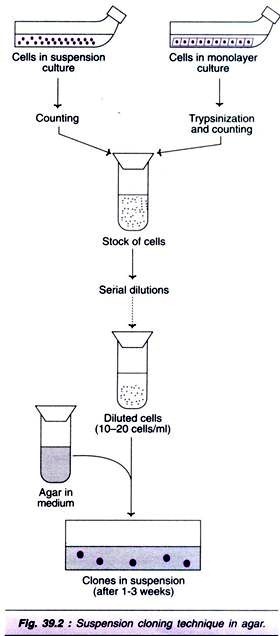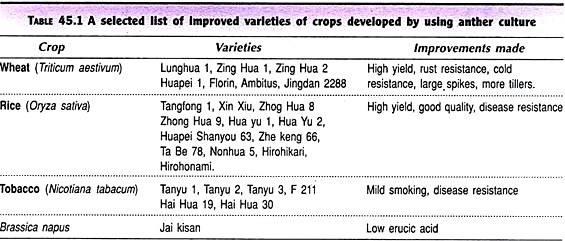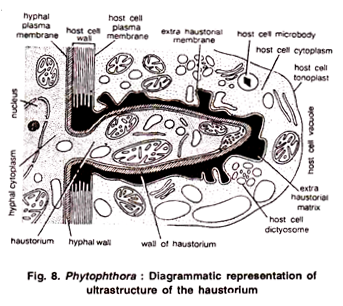This article provides a close look on biological nitrogen fixation and its genetic engineering.
There are economic, environmental, and agronomic benefits from using BNF in cropping systems. All living things require nitrogen. It is a key element of amino acids, the building blocks of proteins.
There is a huge reservoir of N in the atmosphere. Approximately 80% of the air consists of nitrogen gas (N2), but plants cannot use atmospheric N directly to make protein.
The gaseous N must first be converted, or “fixed,” into forms plants can use. Unless fertilizer N is applied, most plants obtain their nitrogen from natural sources in the soil. Natural reserves of soil N are normally low, so N fertilizers must be added to increase plant growth.
Nature has an alternative method of providing N to plants and enriching soil N resources-biological nitrogen fixation. Many members of the legume plant family, such as beans, peas, alfalfa, and leucaena, have the special ability to use BNF to meet their N needs.
Nitrogen Fixing Bacteria:
The free-living bacteria having the ability to fix molecular nitrogen (Table 11.1) can be distinguished into obligate aerobic, facultative aerobic and anaerobic organisms. Obligate aerobic bacteria belong to the genera Azotobacter, Beijerinckia, Derxia, Achromobacter, Mycobacterium, Arthrobacter and Bacillus.
Among the facultative anaerobic bacteria are the genera Aerobacter, Klebsiella and Pseudomonas. Anaerobic nitrogen-fixing bacteria are represented by the genera Clostridium, Chlorobium, Chromatium, Rhodomicrobium, Rhodopseudomonas, Rhodospirillum, Desulfovibrio and Methanobacterium.
Nitrogen is an essential plant nutrient. It is the nutrient that is most commonly deficient, contributing to reduced agricultural yields throughout the world. Developing countries used more than 85 million metric tones of nitrogenous fertilizer in 2003, worth billions of US dollars. Such fertilizer expenditure can be significantly reduced by incorporating biological nitrogen fixed leguminous crops into a growing rotation. For example, 1.4 millions tonnes of N, worth approximately US $400 million/year is fixed by 14 million ha of soybean in Brazil (Table 11.2). This means a substantial saving for farmers in terms of reducing N fertiliser use.
Many agriculturally important plants in the legume family can use nitrogen (N) from the atmosphere for growth through biological nitrogen fixation (BNF). Legume BNF involves a symbiosis between legume plants and the rhizobia that live in nodules on their roots.
Legume BNF involves a remarkable symbiosis, or mutually beneficial relationship, between the plant and N-fixing soil bacteria called rhizobia. The rhizobia invade the host plant’s roots and cause the formation of structures called nodules. Within these nodules (Fig. 11.1) the rhizobia use enzymes to biologically convert (“fix”) N2 gas from the air into a form of N that can be used by its plant host to make proteins. In turn, the plant provides the rhizobia with products of photosynthesis: sugars and carbohydrates that fuel the bacteria and the BNF process.
Nitrogen Cycle:
Free atmospheric nitrogen is involved in nitrogen cycle, where it forms inorganic nitrogen to be used by plants and again released in atmosphere after decomposition. Nitrogen content of different systems is as follows: Atmosphere: 79/100 (as N2), Plants: 5-2/100(mostly organic), soil: 0.5-5/1000(mostly organic).
(i) N gain process: From N2 to microorganisms, and eventually to plant
(ii) N oxidation: ammonia is oxidized to nitrate (nitrification)
(iii) N loss process: Nitrate is ultimately lost as N2 (return to atmosphere)
Comparison of Industrial and biological nitrogen fixation – Microorganism and some plants with the help of microorganisms fix atmospheric nitrogen. In 1910-16, Habar-Bosch process to synthesize ammonia from N2 and H2 was established, and nitrogen fertilizer industry started. This is how large scale nitrogen is fixed and known as Industrial Nitrogen Fixation.
Both processes have common characters:
N2 + (6H) = 2NH3
Conditions for biological N2 fixation: 30 degree, 1 atmosphere pressure, enzyme catalysts-nitrogenize and reducing agents are organic substances. Conditions for industrial N2 fixation: 300-400 degree, 500 a.t.m, chemical catalysts-Fe, A1 oxides. Reducing agent is hydrogen.
Symbiotic Nitrogen Fixation:
The relationship between the plant and the bacteria is known as a symbiotic relationship since both the plant and the bacteria benefit from their relationship. Legumes including peas, lentils and alfalfa can form symbiotic associations for nitrogen fixation with a soil bacterium called Rhizobium. The Rhizobium enters into the roots and forms nodules, which the bacteria then use as their home (Fig. 11.2 A, B).
In the nodules, the Rhizobium fixes N2 into a form that the plant can use. Nitrogen is fixed by binding it to hydrogen and making it into ammonia, which the legume plant can use. Rhizobia benefit as the plant provides carbohydrates to the rhizobia. Carbohydrates are required by rhizobia as a source of energy.
Also, the carbohydrates produced by the legume plant are transported to the nodules where they are used by the rhizobia as a source of hydrogen in the conversion of nitrogen to ammonia. This interaction is quite specific. Specific Rhizobium species fix nitrogen only with a specific type of legume. This symbiotic relationship is very specific and this specificity requires a mechanism for host recognition (Table 11.3). This is mediated by plant compounds, usually flavonoids, which are produced by the roots of the host plant.
These flavonoids influence a series of genes in Rhizobium known as the nod genes, the genes involved in infection and nodule formation. The rhizobia then bind to the root surface. In response to factors produced by the rhizobia, the root hair begins a curling growth, and the rhizobia continue to divide within the coils.
An infection thread, which allows the rhizobia to move into the root hair and eventually to other plant root cells, is subsequently formed. Eventually the bacteria stop dividing and form bacteroids, which fix nitrogen. The nod genes are expressed at specific stages of development. The nod genes code for proteins called nodulins.
Nodulins, including leg-hemoglobin, are expressed at specific stages of nodule development. There are a series of genes involved in nitrogen fixation, referred to as the nif genes or fix genes. The nif genes are found in both free-living and symbiotic nitrogen fixing bacteria and include the structural genes for nitrogenase and other regulatory genes.
Structure and Operation of Nitrogenase:
Active nitrogenase can be reconstituted by the addition of purified Mo-Fe and Fe proteins of different microorganisms. For examples, proteins of Klebsiella pneumoniae and Bacillus polymyxa and those of blue-green algae and photosynthetic bacteria have been combined to reconstitute active nitrogenases, capable of reducing acetylene to ethylene.
During catalysis by nitrogenase, protons and nitrogen compete for electrons. Therefore, in an atmosphere containing nitrogen, hydrogen evolution occurs simultaneously with ammonia formation. This evolution of hydrogen diverts 25-35% of the total reductants available for the nitrogenase reaction, which is regarded as an intracellular wastage of energy in the overall process of nitrogen fixation, and the reaction can be summarized in Figure 11.3.
Nitrogenase contains the two proteins molybdoferredoxin and azoferredoxin (Fig. 11.3). This MoFe cofactor is unique to nitrogen fixation and distinct from the Mo-pterin cofactor of other Mo proteins (e.g., nitrate reductase, xanthine oxidase).
Organization of Nif Genes:
Nitrogen fixation is carried out by three groups of genes. These are; Nod gene (responsible for nodule formation), Nif gene (responsible for nitrogen fixation) and Hup gene (responsible for nitrogen uptake). All these three types of genes are present in a group on a single chromosome. This makes their copying and transfer mechanism simple for genetic engineering purposes.
Though the mechanism of nodule formation is complex nod gene is responsible for nodule formation as well as host recognization and specificity. However, a few genes located on plasmids can produce nodules. Plasmid of R. leguminosarum is less than 10 kb even then it has property to recognize host and nodule formation.
Nod gene:
Most of the biological nitrogen fixing bacteria contains a large plasmid called mega-plasmid. In several functions it is similar to Ti plasmid and contains genes responsible for auxin and cytokinin production. Excess production of these plant growth regulators helps in nodule formation. According to Rosenberg (1981) several special genes are present along with nod genes. Such plasmids are absent in non-symbiotic bacteria.
A nod gene is a group of genes containing Nod A, B, C, D genes having 8.5 kb length. These genes form polypeptides of different lengths (196, 197, 402, 211 amino acid). Nod genes of different rhizobium species have almost 70% homologies which are called common Nod genes.
Nif genes:
This gene is responsible for nitrogen fixation and present in the genome of symbiotic and non symbiotic nitrogen fixing bacteria. In symbiotic bacteria Rhizobium, it is present near nod genes on the megaplasmid, while in non-symbiotic cyanobacteria it is present on the main DNA. Initially Nif gene has been transferred in E. coli.
In higher plants, chloroplast is a cell organelle which might have been originated from prokaryotes, therefore attempt are made to transfer Nif gene into chloroplast. Easy availability of ATP and NADPH2 in chloroplast also makes them ideal recipient for this gene transfer.
Most of the cereal plants are monocots and any such effort to transfer such Nif gene will revolutionize the yield, economics and environmental pollution. However, there are many difficulties in transferring, integration and expression of a prokaryotic gene into a monocot.
Hup gene:
Gene responsible for nitrogen uptake is Hup gene. In symbiotic bacteria this gene recycles the hydrogen produced during nitrogen fixation as shown in the Figure 11.4. Hydrogen produced at different steps is assimilated in the reduction of nitrogen. In most of the legumes 30-50% energy (in the form of ATP) is spent on hydrogen liberation. This results in loss in capacity of nitrogen fixation. If this hydrogen can be recycled by nitrogenase enzyme we can save a lot of energy, and this can be carried out by improved Hup gene.
Klebsiella pneumoniae strain M5 a1 (Enterobacteriaceae) is a free living bacteria which has been studied extensively for genetics of nitrogen fixation. This bacterial genome is quite similar to that of E. coli and Salmonella typhimurium. Therefore most of the techniques of genetic engineering can be applied to Klebsiella.
Nif Gene Organization in Klebsiella:
Several mutants of Klebsiella were developed by growing the bacteria on medium containing a mutagen, methyl-nitro nitro-so-guanidine. Different mutants obtained were used in transformation, transduction to map the Nif gene (Table 11.4). This provided the information that Nif gene is downstream to histidine operator (Fig. 11.4). On the basis of this Nif gene of Klebsiella was transferred in E. coli on the basis of homology in the plasmid and not in genomic DNA. Nif gene organization of Klebsiella is similar to that of Azotobacter, Asospirillum, Clostridium and prokaryotic blue-green algae.
Regulation of Nitrogen Fixation:
All the nif genes in Klebsiella are clustered and coordinately regulated (Fig. 11.5). E. coli to which the nif genes of Klebsiella have been transferred can fix N2. In both the original Klebsiella and the E. coli nitrogenase is expressed only in the absence of both O2 and NH3 in the growth medium. The nif genes are regulated by the nifLA operon. The nitrogen regulators NtrC (= GlnG), and NtrB determine whether or not the nifLA operon is expressed (depending on the presence of ammonia or organic nitrogen).
In the absence of ammonia or organic nitrogen the NtrC protein is phosphorylated by the NtrB protein. NtrC-P then binds to the upstream region of the nifLA operon and activates transcription. NtrA (= GlnF = RpoN = σ54) is the nitrogen sigma factor, which is needed for expression of the nifLA operon and the nif structural genes. NtrA is an alternative sigma factor used by RNA polymerase to recognize many genes involved in nitrogen metabolism which are not recognized by the standard sigma factor.
The nif A gene encodes a protein required for switching on all of the nif genes except the regulatory genes nifLA themselves. If nif A protein is made, its function is to activate the other nif genes. The nifL gene is required for O2 repression. In the absence of NifL protein, nitrogenase is made in the presence of O2 (but is inactivated by O2). When oxygen is present, the nifL protein binds to nif A and prevents it from activating the other nif genes.
The greater study of the infectious process and the genes involved and the physiological aspects will lead to better nitrogen use by plants grown on nitrogen-poor soils in agriculture and can reduce the requirement for chemical fertilizers.
Transgenes with Nif Genes:
It is important to develop transgenic plants containing Nif genes to solve the problem of nitrogen feriliser supplement to crop plants. This will have beneficial effects of economics and environment also. For this purpose, Ti based plasmid and Cauliflower mosaic virus based promoter (CAM promoter) was used to transfer Nif genes in to non-legume plants. To test the efficacy of this system, phaseolin gene from legume (pulses) has been transferred to sunflower where it was expressed and produced phaseolin.
Protoplasts isolation from root nodules and preparations of rhizobia were used to develop hybrids by protoplasts fusion and organelles uptake. Major contributions were made by groups headed by Prof. E.C. Cocking, Prof. M.R. Davey, Dr. I. Portykus (inventor of Golden rice) and Prof. I.K.Vasil. However, true nitrogen fixing hybrids are yet to be obtained by this method.









